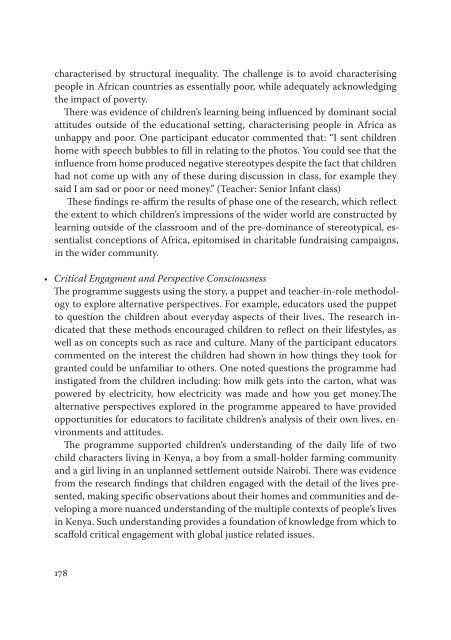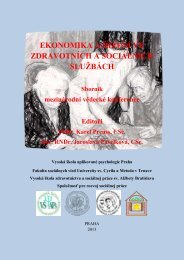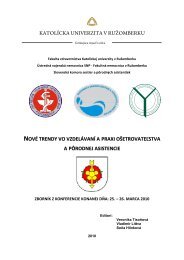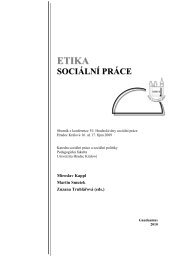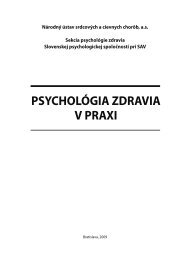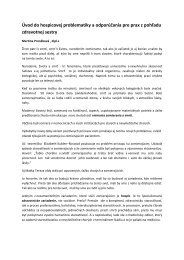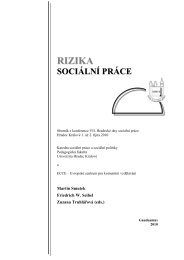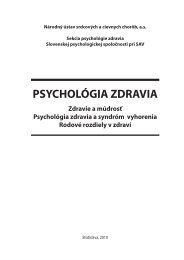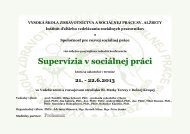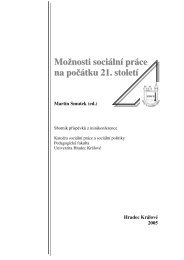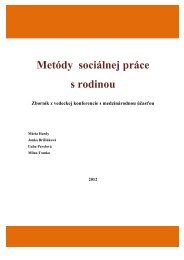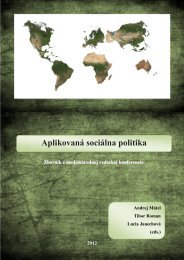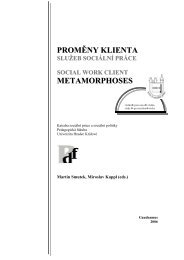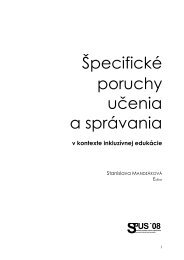Zmena klÃmy â možný dopad (nielen) na obyvateľstvo - Prohuman
Zmena klÃmy â možný dopad (nielen) na obyvateľstvo - Prohuman
Zmena klÃmy â možný dopad (nielen) na obyvateľstvo - Prohuman
Create successful ePaper yourself
Turn your PDF publications into a flip-book with our unique Google optimized e-Paper software.
characterised by structural inequality. The challenge is to avoid characterising<br />
people in African countries as essentially poor, while adequately acknowledging<br />
the impact of poverty.<br />
There was evidence of children’s learning being influenced by domi<strong>na</strong>nt social<br />
attitudes outside of the educatio<strong>na</strong>l setting, characterising people in Africa as<br />
unhappy and poor. One participant educator commented that: “I sent children<br />
home with speech bubbles to fill in relating to the photos. You could see that the<br />
influence from home produced negative stereotypes despite the fact that children<br />
had not come up with any of these during discussion in class, for example they<br />
said I am sad or poor or need money.” (Teacher: Senior Infant class)<br />
These findings re-affirm the results of phase one of the research, which reflect<br />
the extent to which children’s impressions of the wider world are constructed by<br />
learning outside of the classroom and of the pre-domi<strong>na</strong>nce of stereotypical, essentialist<br />
conceptions of Africa, epitomised in charitable fundraising campaigns,<br />
in the wider community.<br />
• Critical Engagment and Perspective Consciousness<br />
The programme suggests using the story, a puppet and teacher-in-role methodology<br />
to explore alter<strong>na</strong>tive perspectives. For example, educators used the puppet<br />
to question the children about everyday aspects of their lives. The research indicated<br />
that these methods encouraged children to reflect on their lifestyles, as<br />
well as on concepts such as race and culture. Many of the participant educators<br />
commented on the interest the children had shown in how things they took for<br />
granted could be unfamiliar to others. One noted questions the programme had<br />
instigated from the children including: how milk gets into the carton, what was<br />
powered by electricity, how electricity was made and how you get money.The<br />
alter<strong>na</strong>tive perspectives explored in the programme appeared to have provided<br />
opportunities for educators to facilitate children’s a<strong>na</strong>lysis of their own lives, environments<br />
and attitudes.<br />
The programme supported children’s understanding of the daily life of two<br />
child characters living in Kenya, a boy from a small-holder farming community<br />
and a girl living in an unplanned settlement outside Nairobi. There was evidence<br />
from the research findings that children engaged with the detail of the lives presented,<br />
making specific observations about their homes and communities and developing<br />
a more nuanced understanding of the multiple contexts of people’s lives<br />
in Kenya. Such understanding provides a foundation of knowledge from which to<br />
scaffold critical engagement with global justice related issues.<br />
178


